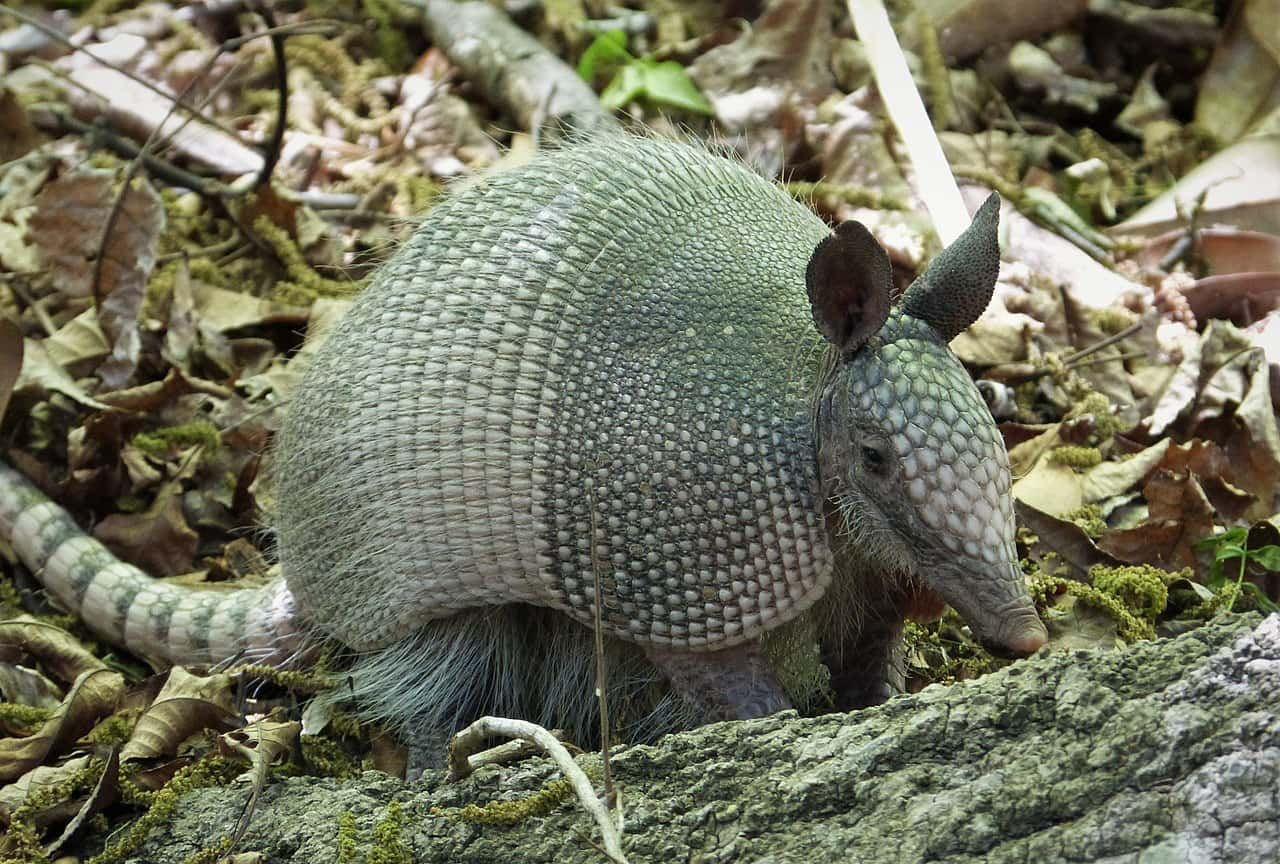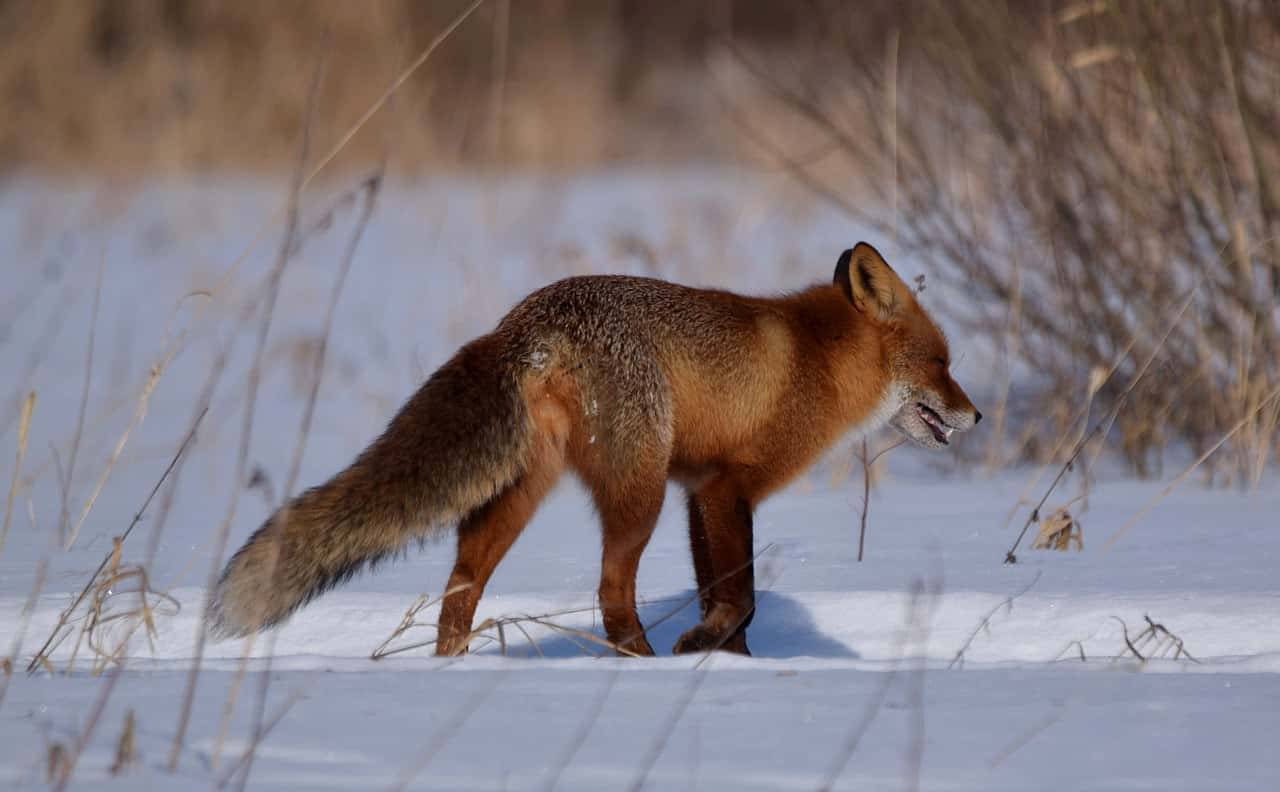Science can be endlessly fascinating—from physics to chemistry to biology, there are so many interesting and wonderful ways in which the world works. Here are 42 totally fascinating facts for science nerds!
1. Honorable Deception
A British ornithologist named George Archibald spent several years acting as the mate of a female whooping crane named Tex—sleeping, dancing, and building nests with her as part of an effort to save the species from extinction. And it worked. The ruse triggered ovulation, and on June 3rd, 1982, Tex hatched a chick named Gee Whiz (conceived via artificial insemination). Archibald was awarded the $100,000 Lufkin Prize by National Audubon in recognition of his efforts.

2. No Wonder
A study has found that our brain perceives people who annoy us as moving slower than they actually are. This is because the company of the annoying can slow down the rate at which the mind processes movement.
3. From 2D to 3D
A neuroscientist from California spent 67 years of his life stereoblind, which means he was unable to experience depth perception. It was only after seeing the movie Hugo with 3D glasses that his brain suddenly clicked and he was able to experience 3D vision. He’d thought the $2 surcharge for the glasses would be a waste of money—little did he know his vision was about to change forever. According to BBC, 5 to 10% of the population is stereoblind.
4. True Blue
Astronomers have discovered a planet 63 light years away, where it rains glass (silicate) sideways, in howling 7,000km-per-hour winds. This gives the planet a blue hue.
5. Clever Birds
Crows have different warning calls, one for cats, and one for hawks, and another for humans. They have over 250 different types of calls in all.
6. Almost as Big as the Real Thing
The largest scale model of our solar system spans the length of Sweden. The Sun is represented by the Ericsson Globe, the largest hemispherical building in the world, in Stockholm. Earth is located at the Swedish Museum of Natural History, 7,600 meters (almost 5 miles) from the Globe. Saturn is found outside the Anders Celcius observatory in Uppsala, 73 kilometers (45 miles) from the Globe. The model includes Pluto and its moon Charon, located in Delsbo and continues with exoplanets Ixion, Erix, and Sedna, and also includes comets and asteroids, including Haley’s Comet. The model terminates with The Termination Shock, the edge of the heliosphere, located in Kiruna, above the Arctic Circle.
7. A Planet No More
From the time Pluto was labeled as a planet, and then demoted to a dwarf planet status (76 years), it never even completed a full rotation around the sun.
8. Safer Energy?
According to NASA, nuclear power prevented an average of over 1.8 million deaths between 1971 and 2009 as a result of lower air pollution from reduced coal usage.
9. Dangerous Research
More than a century after her passing, Marie Curie’s research papers (along with her personal effects and furniture) are still highly radioactive. To access them you must sign a waiver and wear protective clothing.
10. Quadruplets
Armadillos of the genus Dasypus (which is the only genus found in the U.S.) give birth to four genetically identical young that split from the same embryo; their babies are always identical quadruplets. Armadillos are the only known vertebrate animals to exhibit this trait, known as polyembryony.
11. Fleet Foxes
It’s thought that foxes can sense (or even “see”) Earth’s magnetic fields and use it to hunt prey. When pouncing on prey in a direction that aligns with the magnetic fields, the pounces were a staggering 60% more effective.
12. Dangerous Felines
Domestic cats kill more than 64.8 million birds per year worldwide. Cats are thought to be primarily responsible for the extinction of at least eight species of birds.
13. Mathy Quip
Paul Erdős, one of the most prolific mathematicians of the 20th century, regularly used amphetamines to fuel 20-hour math benders. After a friend bet him $500 that he couldn’t quit for a month, he did (and won the bet), but complained: “You’ve set mathematics back a month".
14. Faulty Logic
Extinction was only accepted as a fact in the late 18th century. Georges Cuvier, the father of paleontology, challenged and disproved the previous “theory” that it was impossible for species to go extinct because God wouldn’t wipe out a species he spent time creating for his Divine Plan.
15. The Iceberg Wasn’t So Bad
Due to newly-discovered rust-eating bacteria, the Titanic will be completely gone within 20 years.
16. Delicious Preservation
After large land animals went extinct, such as the mammoth, the avocado had no method of seed dispersal. This would have led to their extinction without early human farmers cultivating avocados. If only dodos had tasted so good on toast, perhaps they’d have been saved too?
17. Sneaky Squid
In 2008, an octopus named Otto, at the Sea Star Aquarium in Coburg, Germany, caused an aquarium power outage by climbing to the edge of his tank and spraying a jet of water at a bright light that was annoying him. He’s also been seen juggling hermit crabs, throwing rocks at the glass and re-arranging his tank surroundings.
18. Hearing Voices
Schizophrenic voices are shaped by local culture. Patients in America often hear frightening voices asking them to do violent things, whereas in Africa and India the voices they hear are usually of departed relatives or nice voices offering comfort.
19. Outdoor Exercise
When a hamster wheel is placed outside, wild mice will come run on it. Scientist Johanna Meijer set up a wheel in her backyard in 2009, and over the next three years, over 200,000 animals including rats, shrews, and even frogs were seen to run on the wheel.
20. Irregular Orbit
The planet Neptune was mathematically predicted before it was directly observed, based on irregularities in the orbit of Uranus. Neptune was officially “discovered” in 1846 by Johann Gottfried Galle, based on calculations by Urban Le Verrier.
21. Deadly
Poison dart frogs are poisonous due to their diet. It’s suspected that the frogs acquire the alkaloids that render them poisonous from eating insects, or from eating unfertilized eggs laid by their mother as food. Poison dart frogs raised in captivity on a non-alkaloid diet are not poisonous, but do become poisonous when fed their natural diet.
22. Biggest Molecule
An object made of vulcanized rubber, such as a truck tire, is essentially one single giant molecule.
23. For The Birds
Passenger pigeons were once the most abundant bird in the world. Ornithologist John James Audubon once reported seeing a flock that took three days to pass. Another ornithologist, Alexander Wilson, reckoned that a flock he saw contained 2,230,272,000 individuals. The tiny bird was hunted to extinction, which occurred officially on September 1, 1914.
24. Living in the Light
The “Sky Beam” that shoots out of the Luxor Hotel & Casino in Las Vegas attracts so many insects that it has established a new ecosystem of moths, bats, and owls. The beam is the strongest on earth—it shines at 42.3 billion candela.
25. They Forgot “Evil”
There are actually seven different types of twins: identical, fraternal, mirror-Image, polar body (Half-Identical), mixed chromosome, superfecundation, and superfetation.
26. Why We Need Rose-Colored Glasses
Our brains have a “negativity bias”, causing us to remember bad memories more than good ones. Negative events will also register as more emotionally impactful than positive events.
27. It’s More Relaxing Anyway
According to a report from the BBC, sitting straight upright in your chair is bad for your back. They recommend instead slouching or leaning at an angle of 135 degrees.
28. Strongest Spine
A tiny rodent known as a “hero shrew” has the strongest spine of any mammal. It’s reported that man once stood on a hero shrew’s back for five minutes, stepped off, and the animal walked away unharmed.
29. Mammoth Mushroom
A 2400-year-old giant “honey mushroom” was found in Oregon, covering 2200 acres, slowly killing off the trees in the forest. It is the largest living organism on the planet.
30. Incredible Journey
A female shorebird, specifically a bar-tailed godwit, was recently found to have flown 7,145 miles nonstop from Alaska to New Zealand. The bird made the journey in only nine days, without taking a break for food or drink.
31. The Nose Knows
Dogs have slits on the outside of each nostril, which allow him to exhale without disturbing the scent particles in front of his nose. Breathing out the side slits helps release air while holding scent particles in the nostrils so that a dog isn’t as likely to lose a scent. This helps the dog determine where a scent is coming from.
32. The Sound of Lights
Aurora borealis, aka the Northern lights, makes an audible sound in the atmosphere. A “clapping” sound can be heard, generated by the phenomenon 70 meters from the ground. The aurora borealis phenomenon is caused by energy particles from the sun interacting with Earth’s atmosphere.
33. They’re No Bird-Brains
Crows, through trial and error learning, are capable of inserting coins into a vending machine for food.
34. Amazing Adaptations
Woodpeckers slam their beaks into trees at forces of 1000 Gs. so why don’t they hurt themselves? The birds have adaptations that prevent them from getting concussions or traumatic brain injury while pecking, including thick neck muscles, and they also have a third eyelid to prevent their eyeballs from popping out.
35. Old Souls
Yew trees, which can live longer than 1,000 years, are often found in graveyards, and have a long association with death. The trees are highly poisonous to humans, with no known antidote. However, the tree is used to produce taxanes, compounds used to fight cancer.
36. Un-Ignorable
Our brains have been engineered in such a way that a baby’s cry is hard to ignore. In fact, recordings of crying infants have been used by the US as torment in the controversial Guantanamo Bay prison.
37. High Fliers
Bumblebees can fly higher than Mount Everest.
38. Doesn’t Sound Pleasant
As far back as the year 63 AD, doctors in Ancient Rome used an early form of electrotherapy to successfully treat neurological conditions such as epilepsy and migraines. They administered the charges by placing electric torpedo fish on the patient’s head.
39. Ghostly Dangers
Science has possibly solved the mystery behind haunted houses, and it doesn’t involve an afterlife. Certain dangerous safety hazards, like carbon monoxide leaks from old furnaces, can cause auditory and visual hallucinations.
40. Flatulent Diplomacy
In the 1980s, scientists from the Swedish Navy detected underwater sounds suspected to be hostile Russian submarines. The suspicion escalated into a diplomatic conflict between Sweden and Russia. It turned out later that these sounds came from fish farts, specifically herring. The scientist responsible for the discovery, Magnus Wahlberg, was awarded the humorous Ig Nobel prize in biology in 2004.
41. More Like Pirate Crunch
In 1971, phone “phreaker” John Draper discovered a way to gain free minutes for long-distance AT&T calls. He would use a toy Cap’n Crunch whistle, which emitted a 2600-hertz tone, the same used the phone system to reset the lines, and to gain access to additional minutes. For this stunt, he’s considered one of the earliest computer hackers.
42. Pruny Wisdom
Fingertips “prune” or wrinkle after time underwater not because of them absorbing the water or washing away the oil, but because of an evolutionary trait directed by the brain to enhance the grip of your fingers underwater.
Sources: 1, 2, 3, 4, 5, 6, 7, 8, 9, 10, 11, 12, 13, 14, 15, 16, 17, 18, 19, 20, 21, 22, 23, 24, 25, 26, 27, 28, 29, 30, 31, 32, 33, 34, 35, 36, 37, 38, 39, 40, 41, 42, 43, 44, 45
















































